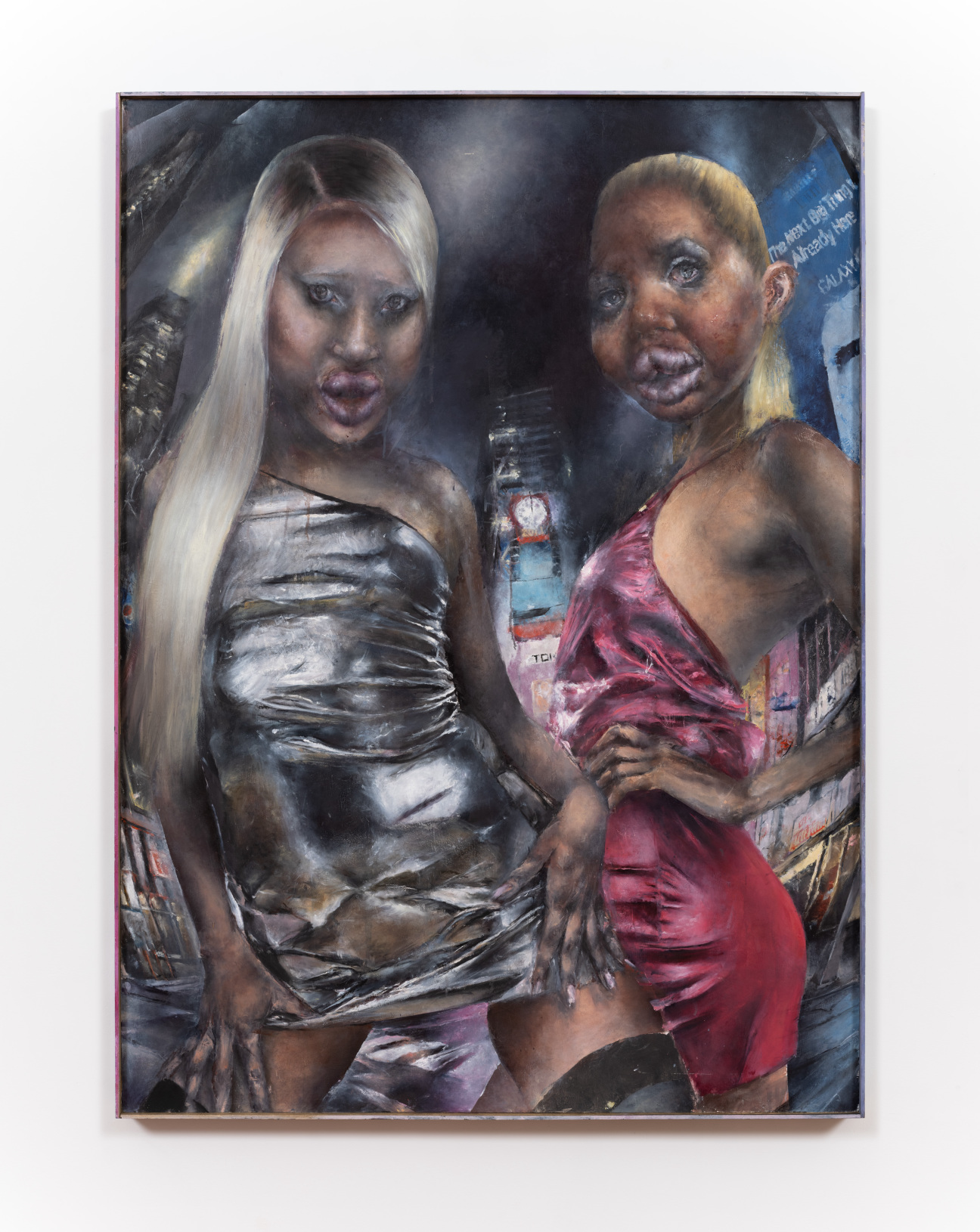
It’s the Friday after Fashion Week, and New York is coming up for air. Over Zoom, Catherine Mulligan and Drake Carr are unpacking the projects that have punctuated their first weeks of fall. Mulligan, a New Jersey-born and Brooklyn-based painter, opened a solo show at Tara Downs. Entitled “Bad Girls Club,” the works on view dig at the gravity of contemporary excess and its aesthetic consequences. Carr, whose exhibition “Walk-ins” filled New York Life Gallery with downtown’s demimonde this winter, is recovering from the chaos of the Armory Show. In a presentation by Artists Space, the Michigan native put on a lively drawing en direct performance, bringing his practice of “house call” portrait commissions to the sterile Javits Center.
Although they’ve never met officially, the pair both navigate the city’s late-millennial creative scene, what would have once been called a counterculture. As Mulligan points out in the conversation below, the archetypes they depict in their work are “two sides of this nightlife coin.” Carr’s sleek characters embody the pre-going out rush, the photo shoot where everyone is feeling themselves and the outfits they pulled. Meanwhile, Mulligan’s subjects, with their Cindy Sherman meets Anna Nicole Smith mugs and skeletal yet turgescent figures, stand for a night’s eclipse—the hangover headache, the lost wallet, and the patina of unbrushed teeth. Here, the artists shed light on their tendencies as well as their insecurities.
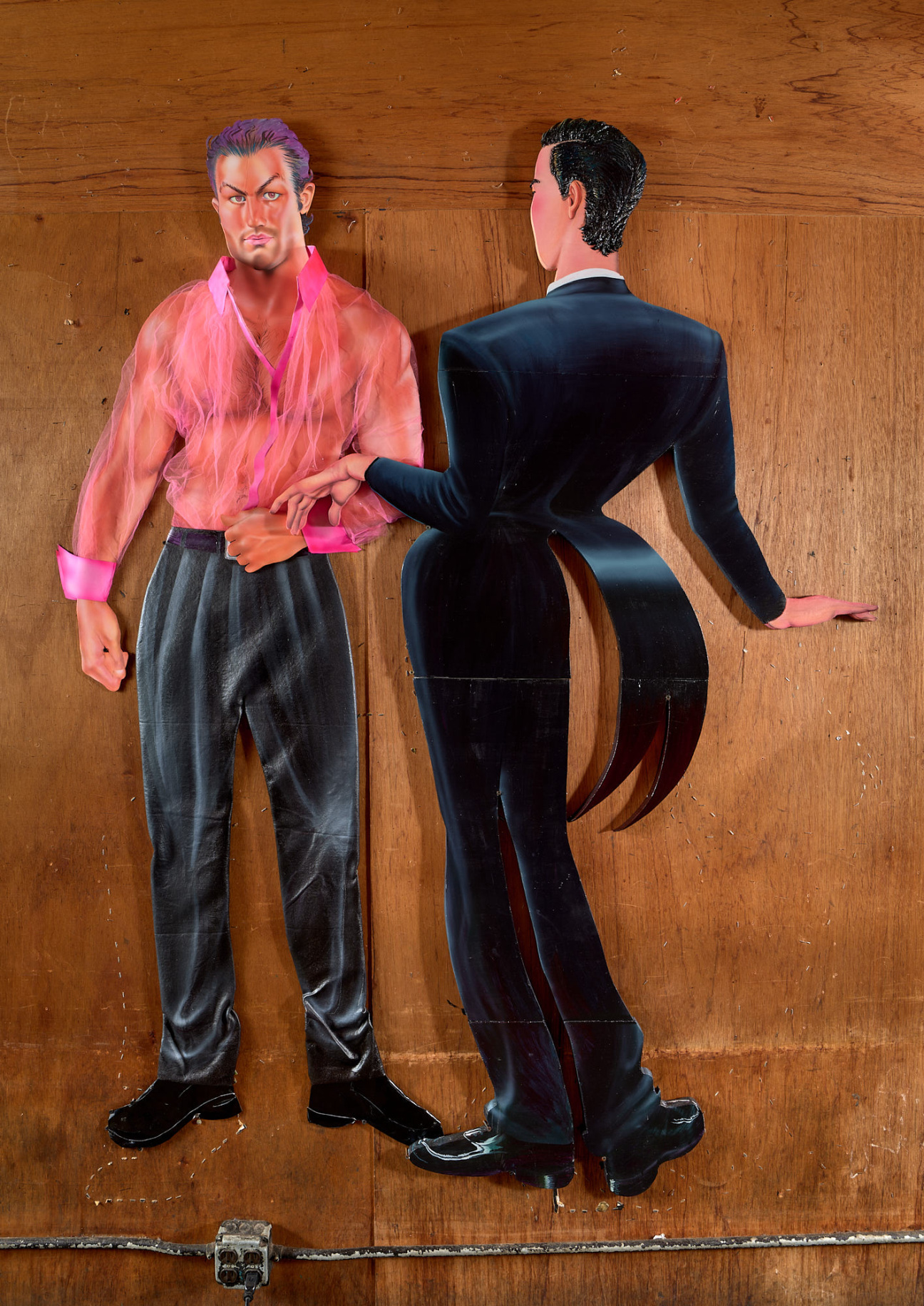
Catherine Mulligan: I saw your work at the bar [Happyfun Hideaway] a while back. I liked seeing it in that setting.
Drake Carr: Me too! I just did a booth at the Armory Show, where I was doing live drawings, but I also had a few cut-out paintings similar to the ones at Happyfun Hideaway. The best thing that I heard was someone being like, “Oh, shit, those are the ones at Happyfun.” It makes me feel the most proud that it's part of this shitty bar.
Mulligan: How does it feel changing the context of the work from a bar to a gallery or an art fair?
Carr: I don't feel weird about taking it out of the bar and putting it there. I'm happy for it to just exist at the bar, but I also have a fantasy of maybe recreating the bar somewhere. I really like how the paintings get fucked up and scratched and gum stuck to them and shoeprints and things like that.
Before I went to your show [at Tara Downs] yesterday, I had a doctor's appointment two blocks away. I was in the waiting room which was all gray and there was this woman blasting reality TV from her phone speaker and then a guy doing construction right outside the window. Somehow it was a nice prelude to seeing your show—this metal, the gray, the reality TV blasting in a really grating way. Because one thing I love about your paintings is how they look like they survived something. I can imagine a fantasy of these portraits being in one of your mansions and them being demolished and forgotten.

Mulligan: That part is actually really important to me. I think about image mediation and degradation a lot. Kind of like you being at the doctor's office waiting room, there's all these textures that color how you see things. The paintings are images, but they're also objects.
Carr: I love a weathered object. It's not really a new thing, but wearing raggedy clothing and shirts that are barely held together is certainly a trend. Maybe since everything is mass-produced, it's nice when you see evidence of something existing for a really long time.
Mulligan: Yeah, I'm really drawn to ruins and ruined things. In the Renaissance, they would go paint the ruins of Rome. It's just something that's in us.
Carr: I don't necessarily think about ancient relics, but I do think about gay bars that don't exist anymore. A lot of the gay bars that still are around aren’t lived in—everything gets renovated in a really fake, neon way.
Mulligan: What drew me to your work is that it really does look like it would be on a flyer for a gay club or something. It’s graphic, but it's also formally tight. I see similarity with our approach to the figure that's vernacular. They are two sides of this nightlife coin—one is a really fun and glamorous euphoric space and one is the comedown.

Carr: When I went to the gallery yesterday, I was the only one there and Tara [Downs] gave me a walkthrough. I told her I was wondering what the similarities were between our work. She said it was an acidic tendency toward the subject. If I think about “acidic” in your paintings, I think of the actual chemical properties of acid degrading or destroying. My insecurity about my paintings is that I veer toward earnestness when I'm thinking about friendship or portraiture. But other times I do feel that she's kind of right?
When I'm making a big cutout painting or doing a gay bar collage, I’m thinking about these gay or gay-adjacent characters because I bartend part-time at Happyfun Hideaway, and I observe a lot of people, and people can be annoying. The music is too loud, the speakers are blown out, this queen thinks she deserves a discount… It's not coming from a mean place, but there are grating personalities, and you can't help but find it beautiful and entertaining.
Mulligan: With both of our work, there's something with the scale and intensity where it can never really just be making fun of something. You're very invested in it. There's empathy there.
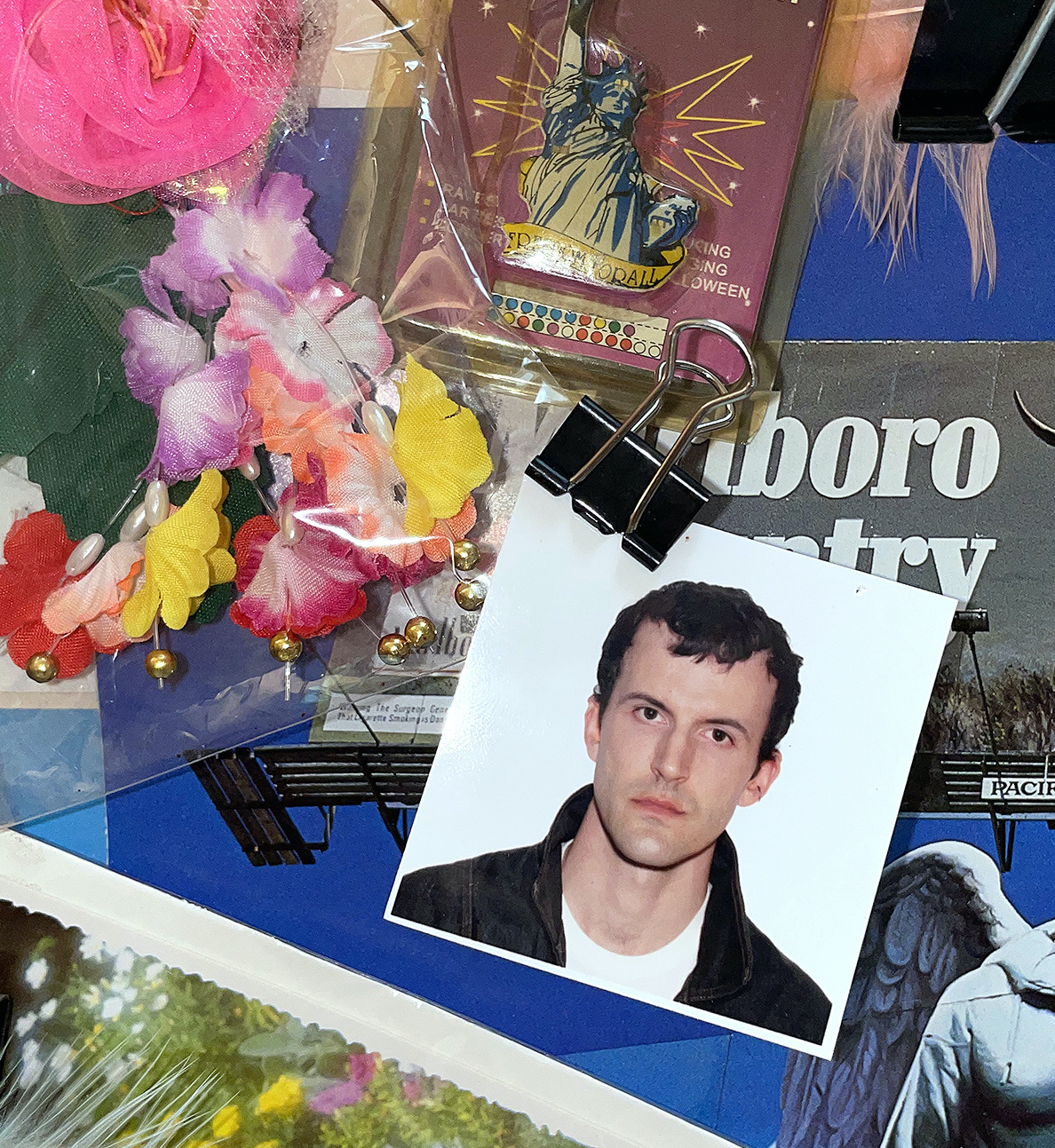
Carr: When people talk about your paintings, do you feel like they get it right? Are there certain things that are said that you're like, “OK, I'm hearing this again, but it's not really what I was going for?”
Mulligan: I'm kind of pretentious about it. My work is about death, and it's eternal. People might be thinking of a pop culture reference point, which is not not there, like, I want them to also relate to a collective memory. But there's a gravitas that I want people to feel in their gut, and I don't know if that happens based on the reactions I get.
Carr: When people talk about my work, they are usually like, “It's so ‘80s,” and I totally get it. But I'm not actually trying to talk about the ‘80s, really. Also, being a gay guy and drawing gay drawings, it's like gay ‘80s equals AIDS. People get stuck at the doorway and then they don't go further into it, and maybe that's my fault. I try to not get too hung up on it. What can you do?
Mulligan: Do you think of the feeling of your work as being a kind of nightlife euphoria? I feel like there's a strong glamor to them.
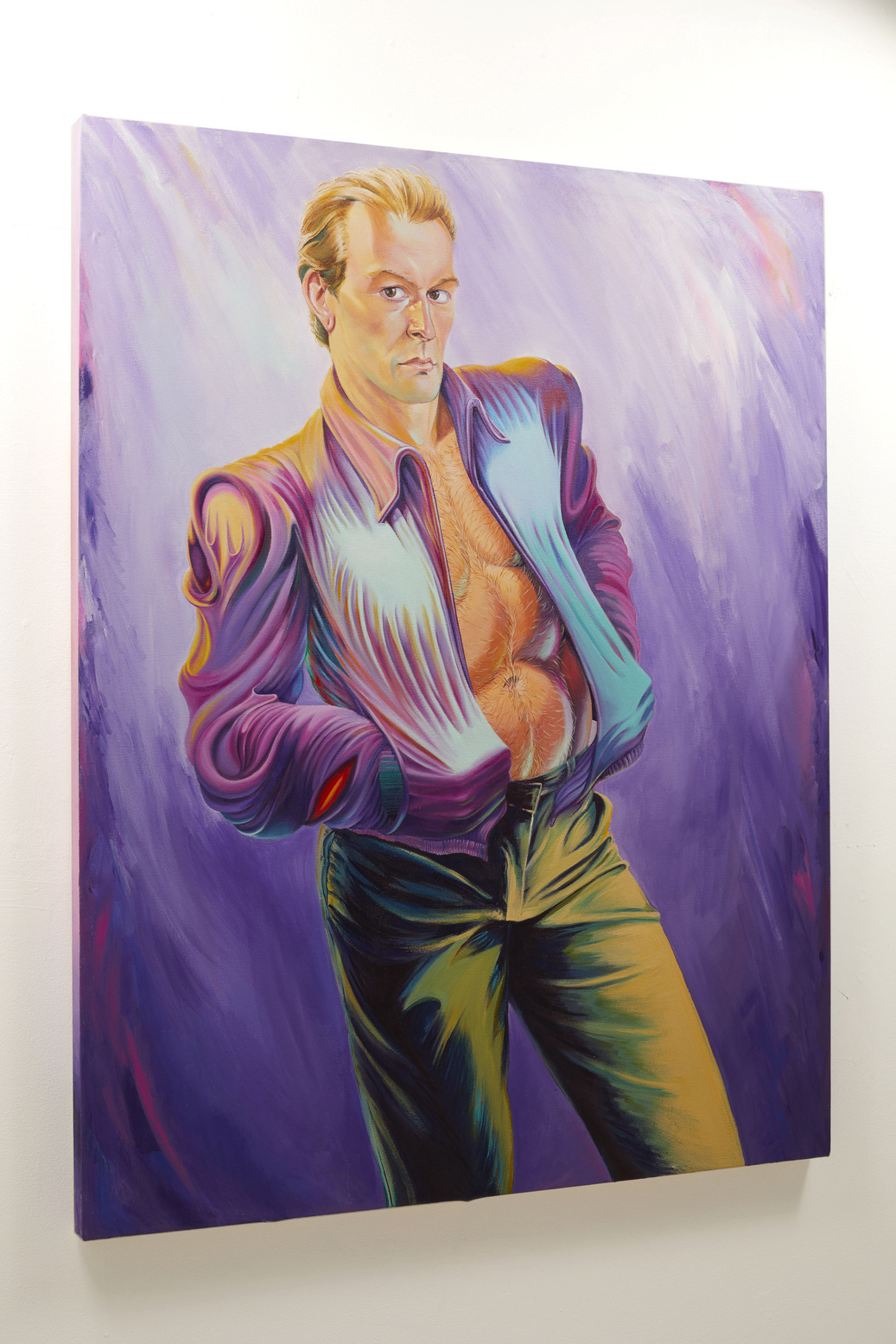
Carr: I'm sometimes afraid to lean into ugliness, so I go for hyper-stylized works. I like it best when it looks polished but there's a kind of sinister anxiety beneath. I will say, when I draw people's portraits, I want them to look and feel beautiful. I sometimes wish I was the type that didn't give a fuck, but I don't want someone to look at the portrait that they sat hours for and not be happy with it.
Mulligan: I don't think there's anything wrong with that. I mean, look at John Singer Sargent or something. It seems like a great world to live in … I had a show at M+B in Los Angeles two years ago and I thought, Oh, wow, these paintings are so California. And they were just like, “These are so New York.” Do you think about New York with your work?
Carr: Almost to my detriment. I love the mythology and the romantic story of it. I'm obsessed with Andy Warhol. Not really his art but reading about him and the mythology around him. When I'm doing portraits of people, I'm thinking about this social circle. Some of these people I don't really know but I draw them, so it makes it seem like we're friends and it benefits us mutually. Commission-based artwork is looked down upon in some ways, but I like working in this commercial way sometimes … What about the future? Do you feel postpartum after a show?
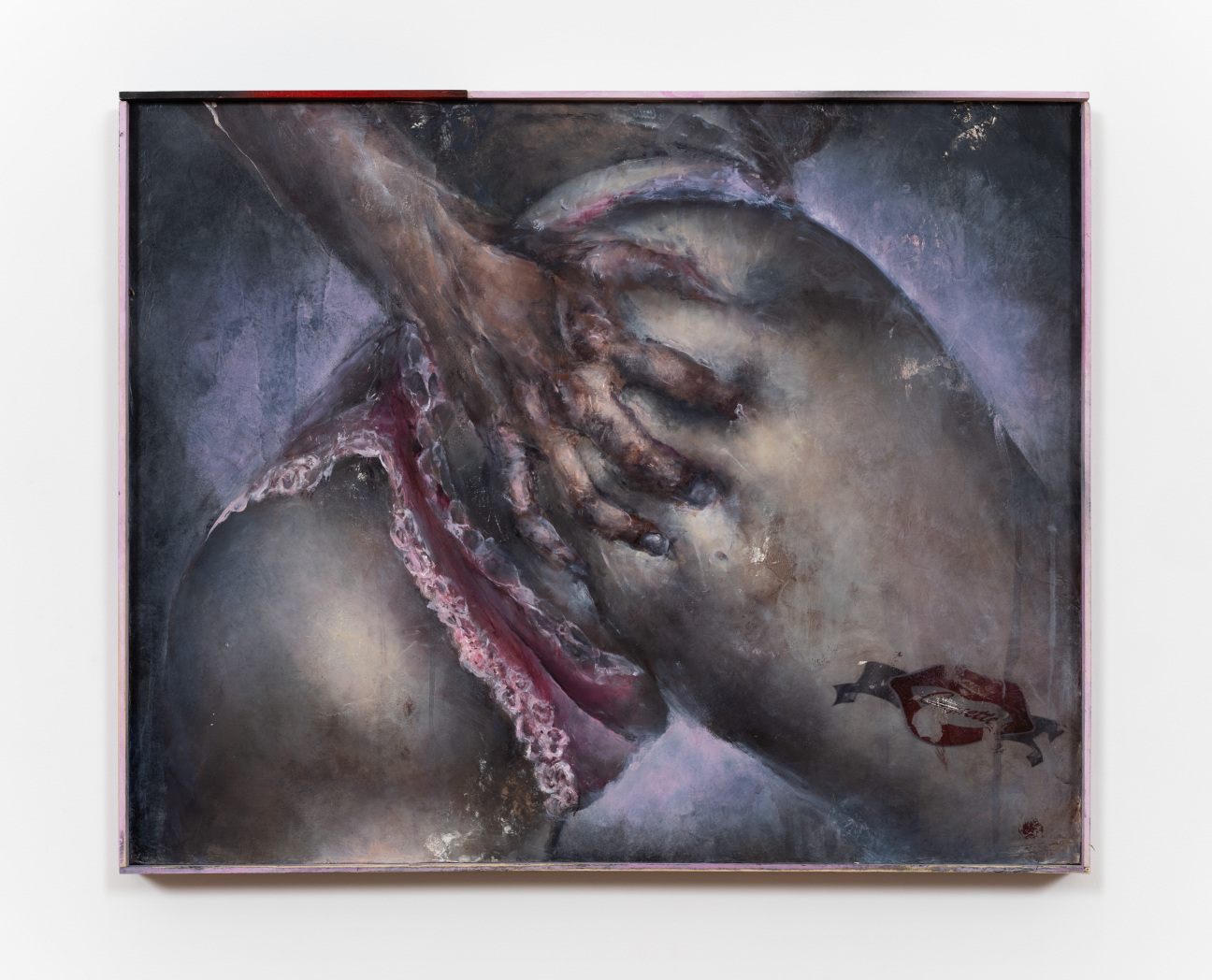
Mulligan: I feel sort of crazy. I worked on it for a year and didn't really show anybody and then suddenly I’m showing everybody. I'm still not really used to that cycle. It's like the lights being turned on after you've been having nightmares.
Carr: I felt pretty depressed after the Armory. It was something I thought about every single day for months, and I wanted it to be so perfect. My mom came and I collaborated with her and there was so much energy, and then your stuff gets dropped off and you're just standing in your studio with these boxes. An art fair can be a scary place as an artist because you're reminded of how one of many you are. Artists Space was amazing to work with—it's just the nature of an art fair that you are a part of this machine. I tried to find a way to work that felt funny and unusual and satisfying to me, and I think I did. But at the end of the day, you can't really escape that you are part of the system. You just have to find a way to get something out of it. It’s a very conflicting feeling. Do you ever, right before hanging a show, have like a feeling of, “Oh, fuck, I just made the worst thing ever?”
Mulligan: Every other day. I went back and forth between being really proud of it and being really nauseated looking at it. I feel like the weird stuff is worth doing even if I don't have that certainty just because it's a thing that doesn't already exist in the world in some form.










 in your life?
in your life?

